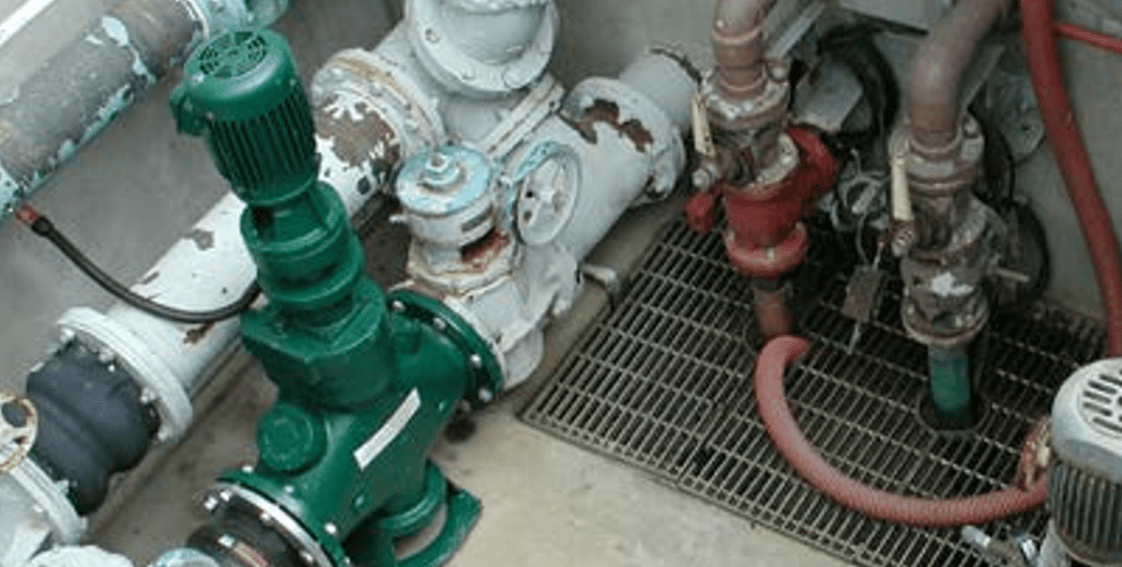
Is Grinder Retrofitting Right for Your Sewage Lift Station?
It’s just past 10 on a Friday night, and the phones start ringing in the pockets of the on-call collection systems operators. It’s an alarm for another pump clog at one of your sewage lift stations — the second one this week.
Does this situation sound familiar? Then, it might be time to consider retrofitting a two-shafted grinder into your problem sewage lift stations. Many of the sewage lift stations in service today were never designed to deal with the high solids content found in today’s sewage. The heavy solids loading, often from disposable wipes, will easily overwhelm traditional pumps, including solids handling pumps.
How Grinders Can Help
The addition of a grinder is really an insurance policy—it maximizes a pump station’s efficiency while curtailing overtime and unplanned maintenance costs.
Grinding wipes, along with other waste before it gets to the pumps, has been shown to be an incredibly effective method for preventing damage, eliminating risks and reducing the time and energy costs associated with clogging.
When a grinder is in place, the wipes are shredded down small enough, so they do not reweave, rope together, or form cumbersome rag balls in the lift stations. They remain in suspension and can be pumped easily.
Ultimately, a grinder can offer the manager of a sewage collections network reassurance that operations will keep moving smoothly day and night, weekends included. Two-shafted grinders, like the Muffin Monster® and Channel Monster® offered by JWC Environmental, can be retrofitted into the system ahead of the pumps to shred debris before it creates a clog.
Determining Candidacy for a Retrofit
Every municipality is a candidate for a grinder retrofit upgrade. However, there are several qualifiers that can flag a lift station as an ideal candidate for a retrofit, including:
- An older lift station not designed for higher solids loading
- Outdated grinding equipment
- Recurring plugs in the pumps requiring manual cleaning
If these issues resonate with you, then your facility is likely a perfect candidate for retrofitting with a two-shafted grinder.
Grinder Location
Older Sewage Lift Stations
In a perfect world, every grinder could be retrofitted within the influent pipe or channel to the lift station before sewage enters the wet well. When the grinder can be upstream of the wet well, there aren’t any pumps to maneuver around, and the environment is cleaner.
However, in many cases, installing a grinder in the inlet isn’t possible. If you’re retrofitting an older pump station, it is likely that no accommodations were considered in the design for a sewage grinder. A common technique when retrofitting a grinder is to mount it to the wall of the lift station’s wet well in front of the influent pipe.
When JWC Environmental installs a retrofit, our engineers design a customized stainless steel mounting frame specific to the particulars of the lift station. The engineering process takes into account space constraints, other equipment like pumps and float switches in the wet well, and making the grinder accessible for easy inspection and service.
Small Spaces
Another scenario that can present itself is a lift station wet well that is just too small for any additional equipment beyond the pumps. In these situations, a simple grinder vault can be added upstream of the wet well in the influent pipe. One option for this is a prefabricated fiberglass reinforced plastic (FRP) manhole with a grinder already installed. These ready-to-install solutions, like the Muffin Monster Manhole®, minimize the engineering and construction costs while still solving the problems at the pump stations.
Planning a Retrofit
Once you’ve determined your pump station is in need of a retrofit and discussed the idea with an experienced representative, take a deep breath.
While the actual retrofit should be simple, it’s important to pay attention to the details of the process. Take good notes, set clear expectations, use a good pump service provider, and once the grinder is installed, follow the maintenance procedures required by the supplier.
When you’re planning the retrofit, it’s also important to take notes about what flow expectations are being used in sizing the grinder and what type of equipment fits your budget so you can reference them later.
The Typical Retrofit Process
Replacing a 25-year-old grinder from a defunct company, an older grinder incapable of grinding up wipes, or adding that first grinder to a lift station experiencing too many pump clogs are all common retrofitting situations. No matter the reason for the retrofit, the process follows a standard course:
- The supplier evaluates the size of the inlet channel or pipe, checks what flow rates the downstream pumps are rated for, and makes sizing decisions based on those inputs. The supplier also evaluates motor options, controls, and other unique site considerations.
- The supplier discusses flow rate options that are above average. We often recommend installing an overflow bar rack with the grinder, which serves as a backup during heavy storm flow events and helps prepare for the troublesome 1% flow that falls outside of the daily average.
- Once the retrofitting strategy is finalized and the equipment is ready, the grinder is installed. The installation process can be fairly quick, and clogging problems often go away after installation.
Additionally, when retrofitting, prior equipment components can be reused. If you’re replacing an outdated grinder with one that has upgraded technologies, like JWC Environmental’s Wipes Ready® cutters, the installation will take advantage of existing infrastructure, including frameworks and controls.
Upgrade Your Setup Today
JWC Environmental is ready to help you upgrade your lift station. We offer a wide range of municipal grinders, including those in our Muffin Monster and Channel Monster series, and can help you find the right fit for your facility. When you purchase a grinder from us, know that we also provide ongoing support, including rebuilds, part repairs and replacements, and technology upgrades.
Please contact us today to learn more about our capabilities or to request a retrofit site assessment.



